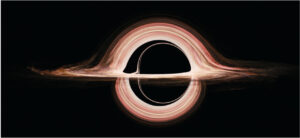This project will examine the radio properties of the most distant supermassive black holes (SMBH). Known as quasi-stellar objects (QSOs) these objects are extremely luminous across electromagnetic spectrum due to accretion on to the SMBH. Some QSOs produce powerful relativistic jets which can be observed at radio wavelengths. The successful candidate will use state of the art Australian radio surveys as well as utilising bespoke follow-up using other radio telescopes. They will then model the radio and optical data to (a) develop a model connecting the accretion and jet, and (b) study the impact of the jet on the host galaxy and environment.
The aim of this project is to conduct a systematic survey of the radio properties of the most distant QSOs in early Universe in order to understand early evolution of the most massive supermassive black holes. With many new large area radio surveys from Murchison Widefield Array and the Australian SKA Pathfinder now available, photometric measurements across a wide range of frequencies can be obtained for this large sample. Radio data at other frequencies will also be obtained to aid modelling of the radio and optical modelling.
The objectives of this project are to:
- determine the radio properties of known samples of bright QSOs powered by the most massive black holes,
- use novel techniques to select new samples of distant QSOs missed from current surveys,
- use the radio data to model the jet power and its age, use optical data to model the accretion disk,
- compare and expand existing models of the dependence of jet-power and accretion on black hole mass, accretion rate and spin.
Understanding how billion solar mass black holes can form so early in the Universe is a key question in astrophysics. Current models require extreme situations for these SMBHs to form so quickly. The presence of powerful radio emission implies very high black hole spin and jet efficiency and hence limits the extreme formation models. In order to constrain the effect relativistic jets have on the accretion and evolution of nascent SMBHs a statistically significant population must be created.
Internship opportunities: This project has the potential for a research internship with CSIRO.
For more information please contact the supervisors. To submit an expression of interest please follow this link by Sunday 18th August 2024.

Simulated image of the accretion disk of a super-massive black hole from the team which produced the black hole images in the film Interstellar (Oliver James et al 2015 Class. Quantum Grav. 32 065001)
